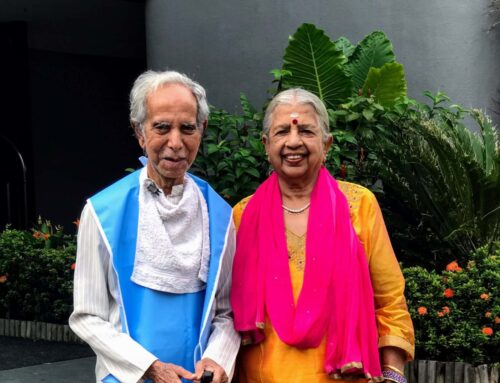Indian exuberance is misplaced
Shoba Narayan
The odious comparison comes up all the time, especially during the recent run up to the Commonwealth Games. Every time a walkway collapsed or an official complained about filthy toilets, India collectively sighed and mutely acknowledged the elephant in the room: the Beijing Olympics. Across the globe, in Indian blogs and usenet mailing lists, Indians engaged in a collective, heartfelt and oft-repeated comparison between the two most populous nations on earth. As I prepare to spend 10 days in China, I wonder if the Chinese indulge in as much soul-searching about India as we do about their country?
Against this milieu, The Economist’s recent issue that talks up India over China offered welcome relief to Indians. “How India’s growth will outpace China’s,” said the cover. The numbers, certainly, seem to add up. Indian stock markets are flirting with their all-time highs. According to data from the Bespoke Investment Group that compared the performance of stocks in 22 countries since the financial crisis of 2008, China is the worst performer and India the second-best, behind Mexico. Chinese stocks are down 56 per cent from the peaks reached before the global downturn. In comparison, India is down a mere 2 per cent. In last week’s World Economic Outlook, the IMF forecast that the Indian economy would grow 9.7 per cent next year and 8.4 per cent the following year; higher than the 8.5 per cent that the Indian finance minister Pranab Mukherjee estimated when he sought to reassure investors last week that India’s record foreign institutional investor inflows and its strong market rally did not point to a bubble economy.
The reason for India’s current strength goes back to China’s mercantilist, export oriented economy. China’s fortunes, linked as they are with the West, mean that when the West sneezes as it did during the credit crisis, China catches a cold. Thanks to a large domestic economy that is not so export-oriented, India (and Indonesia) have been relatively immune to this phenomenon. A recent report from HSBC said trade confidence in India was the highest among the 17 countries they surveyed. India’s trade confidence index for the coming six months stood at 140 , up from 133 in the first half of the year. China’s was 111.
The numbers are only part of the story. This reality is visible on the ground. Walk the streets and India’s economic vibrance is both palpable and infectious. Vegetable vendors lease solar-powered lamps to continue their business late into the night. Illiterate women who work as household help band together to borrow micro-credit loans in growing numbers. Jewellery stores are jammed with customers buying ornaments for the coming festive season, no matter that gold prices are at an all-time high. Consumer confidence is buoyant. There is little memory here of the financial malaise caused by the credit crunch a mere two years ago. As the IMF report says: “Leading indicators – the production manufacturing index and measures of business and consumer confidence – continue to point up.”
As contrary as this sounds, I think The Economist and other forecasters are being overly optimistic about India, at least in the short term. India’s consensus building, take-everyone-with-you approach is in contrast with China’s take-no-prisoners approach. This may well win in the long term but it is a gradual, even glacial process. I doubt that it is going to happen by 2013, as The Economist predicts. The reasons trotted out to substantiate India’s growth over China’s are India’s demographic dividend, its democracy, its knowledge economy, and its English-speaking elite who don’t distrust the West and its ways. What most people don’t talk about is the differences in national psyche. China is rooted in a martial arts culture that is fierce and focused. Its people grew up with discipline and are comfortable with hierarchical control imposed by superiors. The whole notion of losing face could be applied to the current currency stand-off between China and the West. For all these reasons, I believe China will continue to surge ahead of India, not only because they are a centrally controlled, efficient economy but also because every Chinese citizen works in tandem towards the same goal. No questions asked.
India, in contrast, doesn’t have China’s killer instinct. In India, everything is chalta hai, as we say. It’s OK. We’ll adjust. We are comfortable with failure and philosophical about our flaws. Nowhere was that more obvious than during the Commonwealth Games brouhaha when officials gave all sorts of outlandish excuses for India’s infrastructure woes. Cleanliness was relative, said one when asked about the filthy toilets. When asked about a collapsing walkway, another official said it was a one-off incident caused by unusually torrential rains. The whole nation made up jokes about their own administration and still, it seemed, the officials didn’t care. There was no accountability but much cacophonous dialogue. That’s supposed to be our strength, isn’t it? A joke about Suresh Kalmadi, the head of the Games organising committee, went like this: “So Kalmadi wanted to commit suicide and hung himself. Except he couldn’t. The ceiling collapsed.” There was seemingly no embarrassment at losing face in the eyes of the world.
As the Obama administration is finding out in the ongoing gloves-are-off currency fight, China doesn’t like being told what to do. Instead of issuing ultimatum, the Treasury secretary Timothy Geithner should find a “superior” to tell China what to do. The IMF is a good start but its clout is doubtful. In addition to studying the numbers, Mr Geithner should perhaps study Chinese martial arts. He could use them, both to get into the Chinese mindset and to build up his own and his administration’s strength.
Shoba Narayan is a journalist based in Bangalore and the author ofMonsoon Diary




Leave A Comment